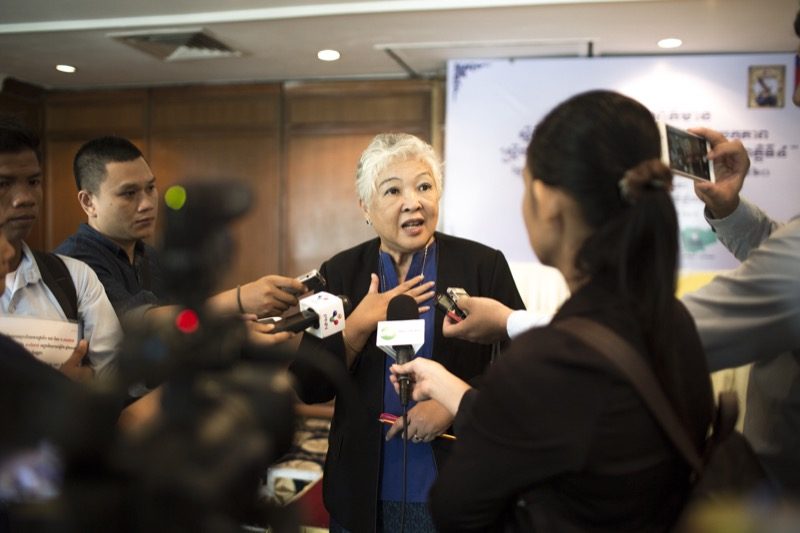Female representation among candidates for the upcoming commune elections increased only slightly—1.6 percent—compared to the 2012 election cycle, and too few of the women were endorsed by their party as the primary candidate, according to an NGO report released on Tuesday.
The near-flatlining since the previous election cycle highlighted a mismatch between political promises and reality, said Seng Reasey, a project coordinator at women’s rights NGO Silaka, which wrote the report alongside the Committee for Free and Fair Elections in Cambodia (Comfrel).

“Political parties and the government try to say that they promote gender equality, but in practice it’s not the case,” Ms. Reasey said.
The government, adopting a global U.N. goal, has said that government positions should be held by an equal split of men and women by 2030.
But among the 94,595 candidates across 1,646 communes in this year’s election, only about 27 percent are women, researchers said. Fewer than 8 percent of the women are “first rank” or primary party commune candidates.
The CPP committed 131 female candidates to positions of this rank, compared to 93 in the previous cycle, the report said. The CNRP nominated 103, an increase of 15 from the combined totals from the Sam Rainsy Party and Human Rights Party, which merged after the last commune elections.
The League for Democracy Party made the most notable increase, from five female candidates to 57.
But the vast majority of the women eager to engage in politics are placed in ranks less likely to win, despite their higher popularity in surveys, Ms. Reasey said.
“It is very sad because the main two political parties have not fulfilled their obligation,” Silaka director Thida Khus said. “We’re supposed to be reaching 30 percent [representation] to make the women’s presence more meaningful.”
“If you just increase by 1 or 2 percent [each election], you will not reach 50 percent,” she said.
CPP spokesman Sok Eysan defended the ruling party’s strides toward the goal.
“I think what they claimed is not fair for the Cambodian People’s Party, because we can see that 23 percent are women—more than other parties,” he said. “The government has a policy to reach the goal, but we have to do it step by step. For example, if you plant a mango tree, you can’t get its fruit in two to three months. You must at least wait 10 years.”
Senior opposition leader Mu Sochua noted that over a quarter of the party’s 4,063 female nominees were placed in the top five spots per commune, but said it would take time to bolster this number.
“You need to look at qualification,” she said.




